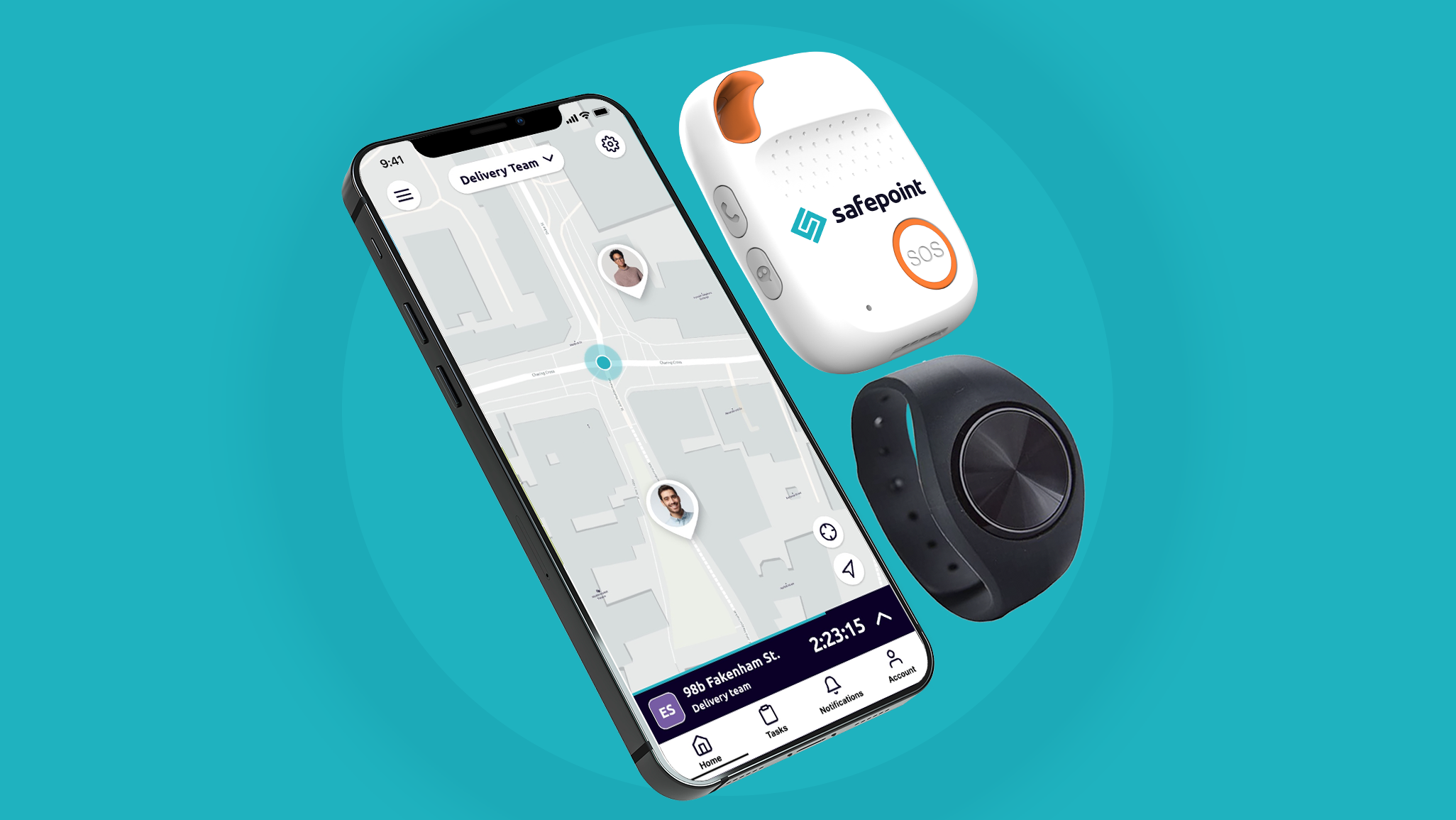Working from home health and safety guide (2024)
How many people work from home (or hybrid) in the UK?
Nearly half of working British people have worked from home in the last seven days*.
This figure may be surprising to some, considering the many campaigns over the last few years urging workers to “come back into the office”.
The truth is that, while rates of fully remote home working have indeed been declining since their peak in 2020, the rate of hybrid working has never been higher.
In fact, at the start of May 2024, a whopping 36% of people worked at home in a hybrid role for some of their working week*.
Above, the occupations most likely to work from home for some of the week**
Who works from home?
Those working in “professional occupations” are the most likely to work from home for some of their week (71%)** followed by “Managers, directors and senior officials” (64%) and “Administrative or secretarial occupations” (51%).
While these “desk-based” roles make up the majority of home and remote working, it definitely exists in other occupations:
Rates of lone working in non-administrative roles
Skilled trades occupations – 16%
Caring, leisure and other service occupations – 14%
Sales and customer service occupations – 19%
Process, plant and machine operatives – 10%
Elementary occupations – 4%
This is important because the common view around home working (that it’s just for “email jobs”) is not quite correct. If 1 in 5 skilled tradespeople and 1 in 10 machine operators are working from home, then we need to think a bit more seriously about how we talk about home working and remote working safety.
Is home working safe?
This is a question without a simple answer. Of course, a data administrator working from home, rather than the office, probably won’t experience much increase in risk.
However, some risks are made worse by working from home. Many of these risks crossover with the idea of “lone working” –i.e., the very act of working alone that can amplify a risk factor.
What’s important is that businesses assess the risks of their home, remote and hybrid workers as part of the overall risk management process and take the necessary steps to keep their team safe.
Do businesses have a legal obligation to protect home workers?
Yes, businesses must protect their employees wherever they work, including when they are working remotely or from home.
Please note that this does not mean businesses should see home working as some expensive, complicated “health and safety nightmare”. Despite its reputation, health and safety law in the UK tends to be based on reasonable common-sense policy.
If you have experience handling on-site health and safety, you shouldn’t find WFH health and safety standards particularly challenging or surprising. (And if you aren’t experienced in health and safety, don’t worry, we’ll make it simple!)
What do businesses need to do to protect their home workers?
The Health and Safety Executive suggests that businesses should focus on the following areas when thinking about the safety of their home workers:
Updating risk assessments
Managing stress and mental health
Using computers and laptops safely at home
Managing working environments and accidents
We’ll review each of these points and give you a quick overview of what you should do.
Risk assessments for home workers
The HSE says that organisations must include home workers in their risk assessments.
Notably, they say that health and safety considerations for home workers should be “balanced and proportionate”. That means that you should take it seriously, but you can be realistic about the level of risk.
(Note: Looking for a free risk assessment template? We have one here)
So, what might a home worker risk assessment look like? First, you should consider the following:
How will you keep in contact with your home workers?
What sort of work will they be doing at home?
Can the work be done safely from home?
Do you need to take any steps to control the risks of working from home?
As well as these general assessments, it’s also important to look at the individual risk of the worker. For instance:
Does the worker have any special requirements, such as a disability or health issue, that may affect their safety?
Are there any significant hazards specific to the worker’s role? Do they work with tools, chemicals, etc?
Actions you can take to keep home workers safe:
Provide guidance on how to set up a safe working environment at home.
Providing questionnaires and self-assessment tools
Keep in regular communication with your team via phone, text, messaging services –whatever works for you.
Finally, it’s important to remember that not all jobs can be done safely from home. If someone’s home is not suitable for their work, or reasonable safety measures cannot be implemented, you may need to find them an alternative place to work.
Managing stress and mental health for home workers
Everyone is different when it comes to mental health. For some, working from home will be incredibly beneficial, for others, it can be detrimental. It’s important to communicate with your team on what will work best for them.
Remember, employers have a responsibility to their employees’ mental health, as well as their physical health. The HSE’s main instruction on this is simple, “You must protect workers from stress at work by doing a risk assessment and acting on it”.
Here are some more specific actions you can take:
Talk openly with your team about stress and mental health risks
Involve your team in your stress risk assessments so they can help build the solutions (this is a good idea for all types of risk assessment)
Keep your team up to date on your mental health processes and actions
Make time for regular “check-in” meetings and make home workers aware of the resources available to them.
Always remember a worker’s specific needs. Some employees may have more needs than others.
You can learn more about your stress and mental health responsibilities as an employer, here.
Home workers and DSE - Using laptops and computers safely
If your employees use a screen (referred to as “DSE” or “Display Screen Equipment” in health and safety circles), for more than an hour at a time as part of their normal job, you need to do a “workstation assessment”. This is true whether your team members work in an office, at home, or at a hot desk.
To make sure your team members have a healthy workstation, you should look at:
the entire workstation: equipment, furniture and working conditions
What type of work they’re doing
any special requirements, such as a user with a disability
Aim to reduce risks as you would at an “on-site” workspace.
You can find more information about DSE, here.
Working from home in higher-risk roles
When we talk about “working from home”, people tend to think of low-risk data administration or creative roles but, as mentioned at the beginning of this article, that isn’t always the case.
Examples of “higher-risk” work-from-home roles:
Those who are based at home but are frequently “on the road”. This can include estate agents, salespeople and even tradespeople. Arguably, these workers are even more likely to “fall between the cracks” of safety monitoring than those in a similar role but who are office-based.
Those working with tools, chemicals or machinery –including those working from a home workshop or garage.
Are home workers “lone workers”?
The HSE and the British Standards Institute have confirmed that working from home is “lone working”.
Lone working is when someone works out of eyesight or earshot of their colleagues for some of the day. By this definition, it’s clear why working from home (or remotely) would count as “long working”.
The UK has some of the strongest legislation around lone working in the world, but it is based on practical, sensible principles. As mentioned throughout this article, you always need to assess the risk with any work, but you don’t always have to take dramatic measures.
Being a “lone worker” or “home/remote worker” doesn’t inherently make a job more dangerous, it just means, that if something goes wrong, it might be harder for an employer or manager to notice.
How our lone working solutions can help those who work from home
As lone working experts, we work with many organisations that employ home-workers who need extra protection.
Keeping track of “based at home” lone workers
Sometimes, a worker will be based at home (say, for administrative duties), but will then go on client or site visits. If that user were to be injured while “out of the office” their colleagues may not know for a long time. When there is no “office” to come back to, someone’s absence can be easily missed.
Home workers on business trips
Those travelling for work often have considerably little oversight from their team and can be at high risk. We have offered our expert lone working services for those who are normally based at home but sometimes make business trips.
Businesses use our lone worker tracking solutions when their employees are on long drives or are visiting international sites. Our products not only keep everyone safe, but they also make it easier to keep track.
Lone working at home and medical conditions
Sometimes businesses will use our lone worker safety products to protect their workers with pre-existing medical conditions. For instance, we have provided fall-detection devices to work-from-home employees with epilepsy.
Summary: keeping workers safe when they work from home
While many people who work from home work in low-risk roles (including the person writing this article!), their risks must still be taken seriously.
You must understand your home workers’ unique needs to meet your health and safety liabilities. Spending time on this will help you protect your team and your business.
For many businesses, providing a safer “work-from-home environment” might mean providing better workstations or mental health support. For higher-risk roles, however, companies may need to invest in a safety monitoring solution. Some roles cannot be done safely from home, and should be brought “in-house”.
If you’re worried about the safety of your work-from-home team, or if you are struggling to keep track of your remote workforce when they’re out and about, get in touch with Safepoint Lone Working.
We offer apps, wearable communication devices and even fall-detection alarms that can help you keep your team safe.
————
Notes:
*Calculated by Safepoint based on 2023/2024 ONS data. 47% of people worked from home some of the time or all of the time, exclusive of “working people” who did not work in the last seven days.
**Statistics in this section are based off of 2023 ONS data, when it was last updated.










